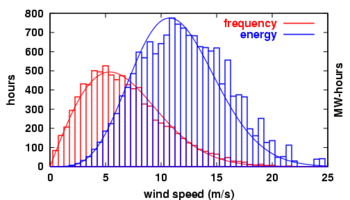The total amount of economically extractable power available from the wind is considerably more than present human power use from all sources. An estimated 72 terawatt (TW) of wind power on the Earth potentially can be commercially viable, compared to about 15 TW average global power consumption from all sources in 2005. Not all the energy of the wind flowing past a given point can be recovered
Wednesday, June 2, 2010
Wind energy
The total amount of economically extractable power available from the wind is considerably more than present human power use from all sources. An estimated 72 terawatt (TW) of wind power on the Earth potentially can be commercially viable, compared to about 15 TW average global power consumption from all sources in 2005. Not all the energy of the wind flowing past a given point can be recovered
Subscribe to:
Post Comments (Atom)


No comments:
Post a Comment